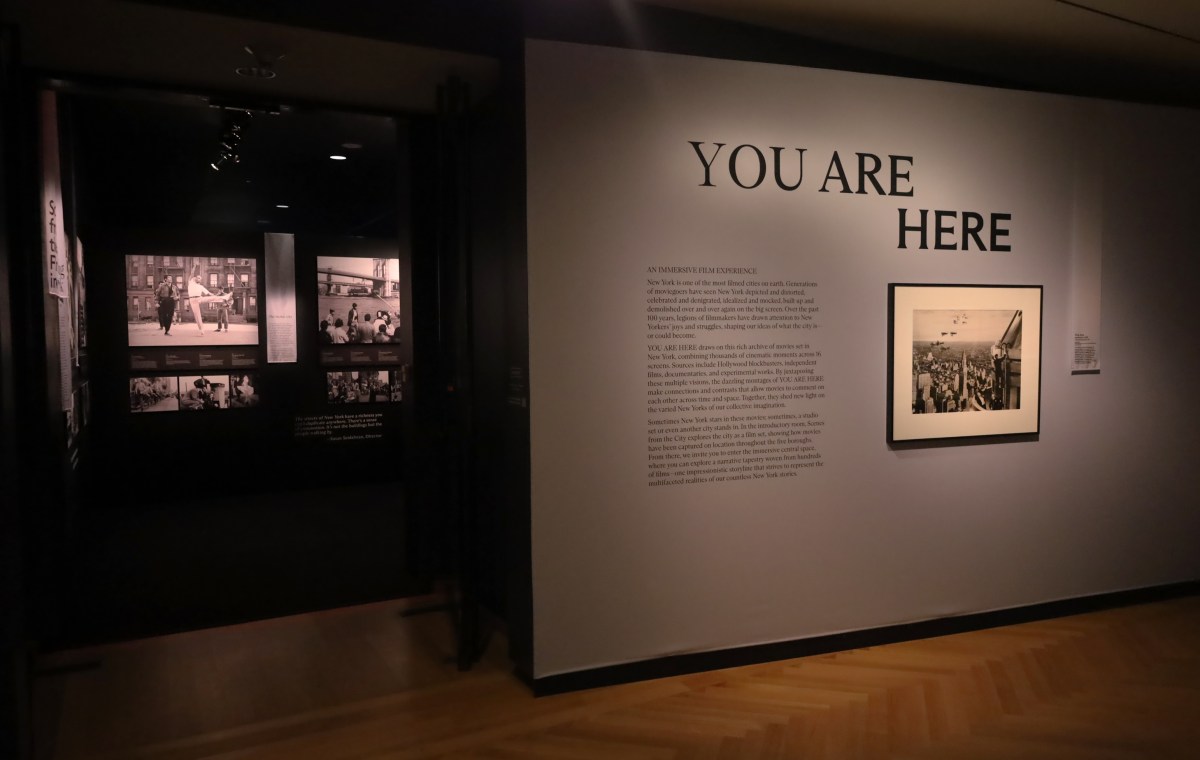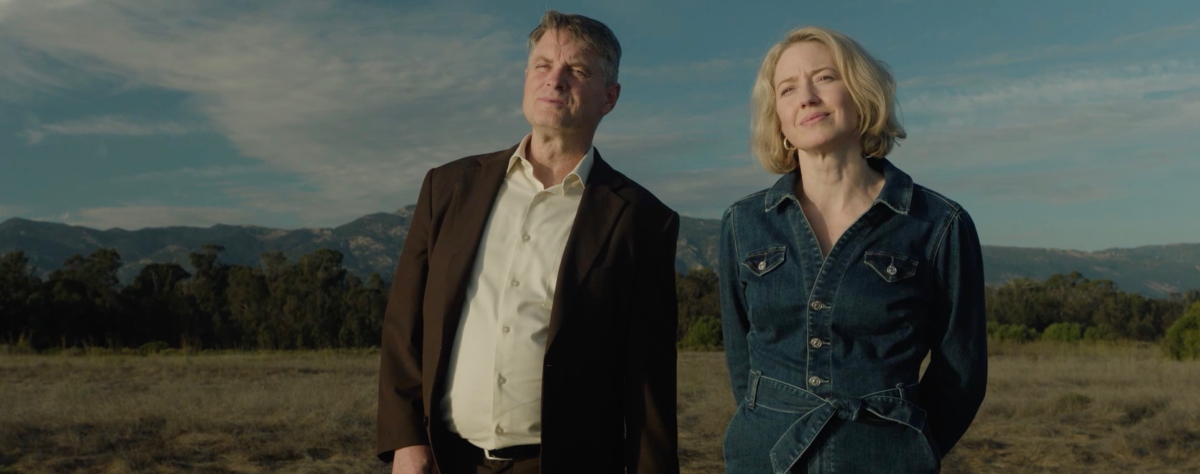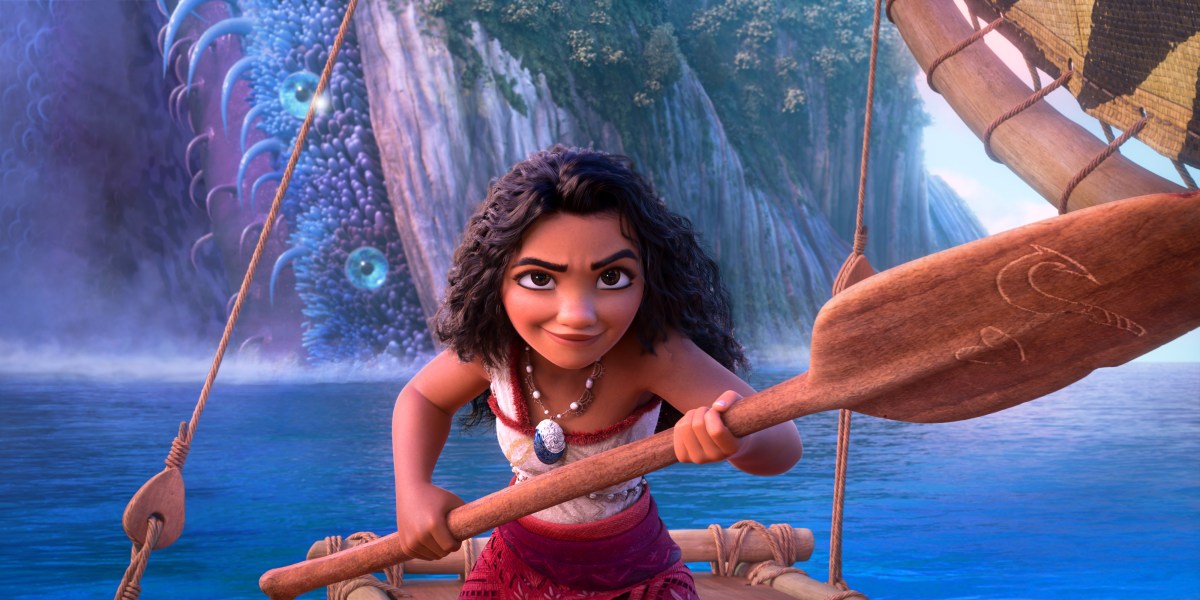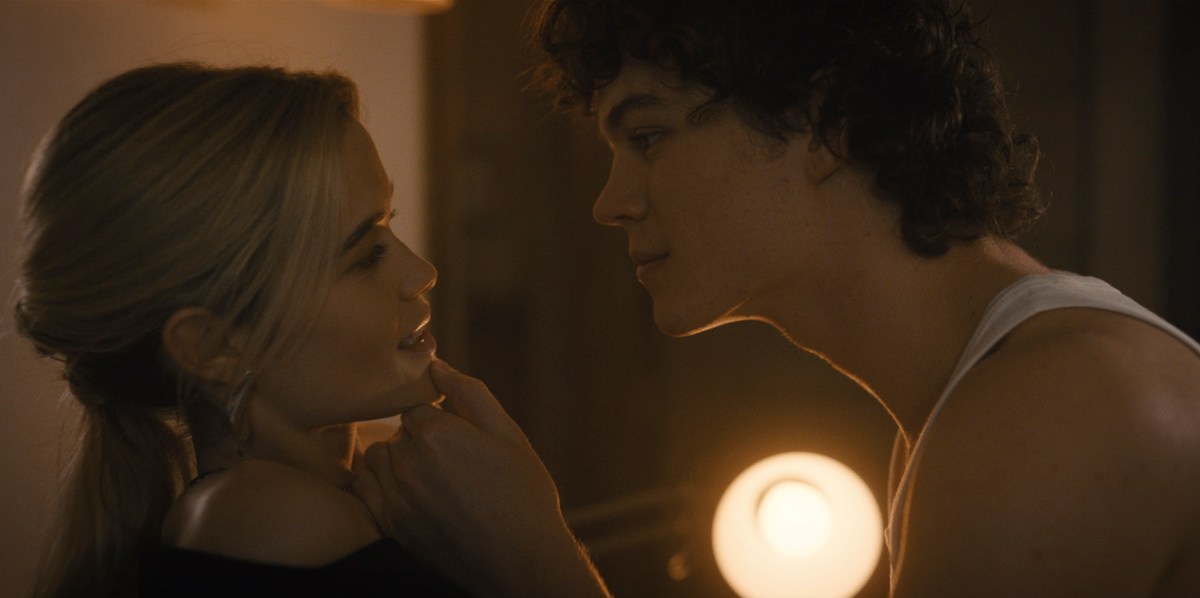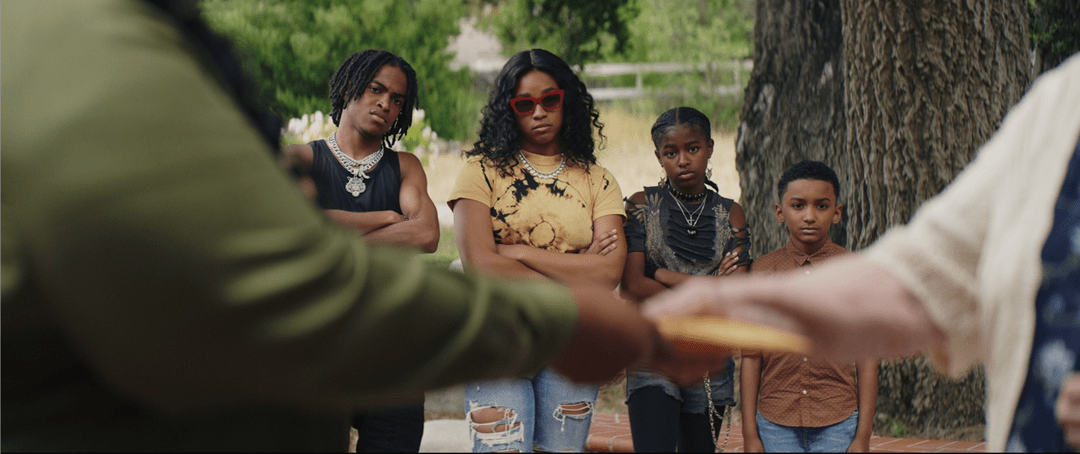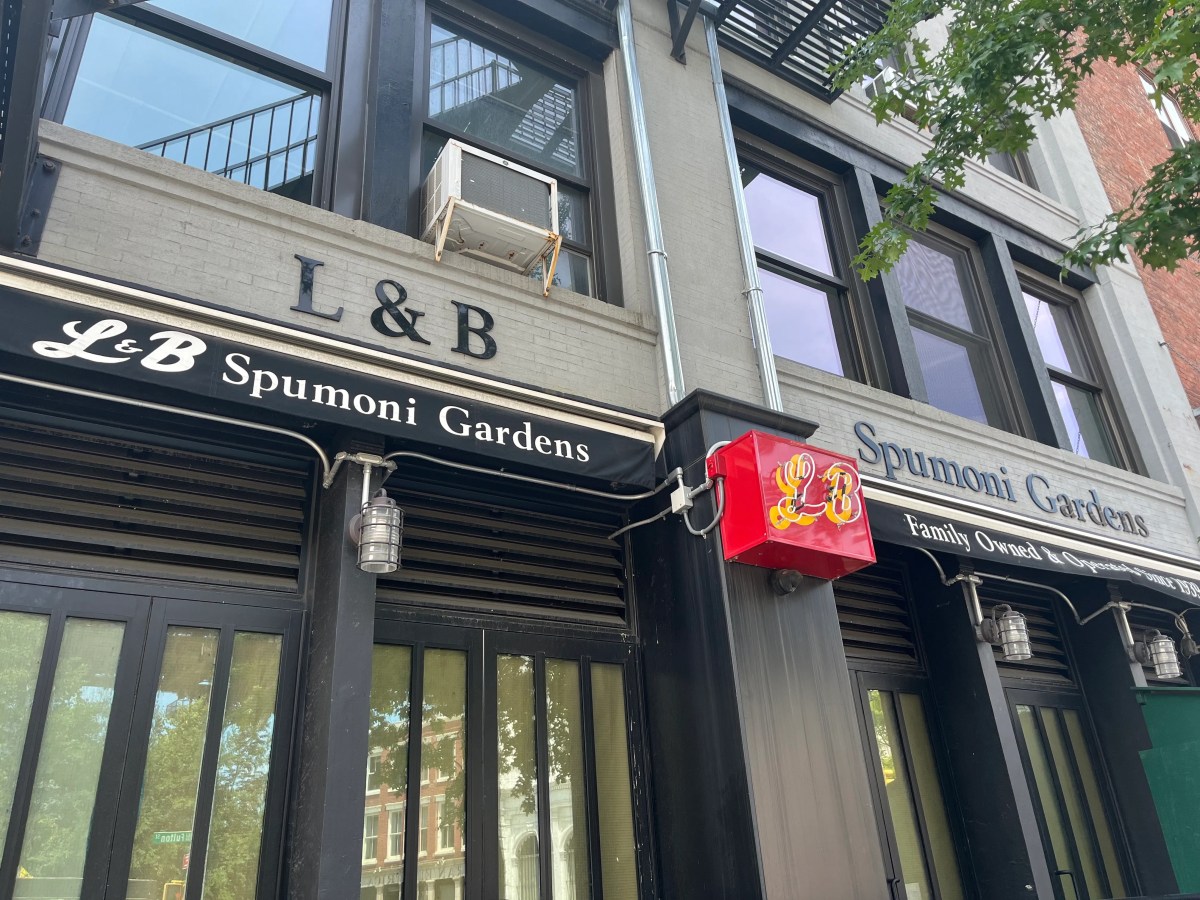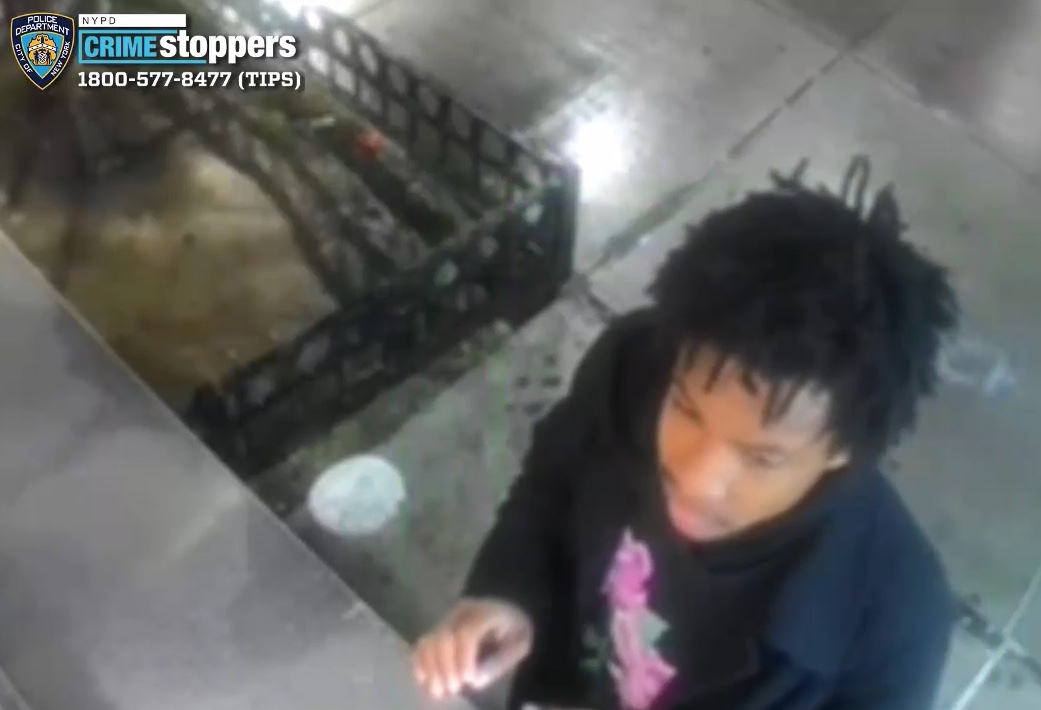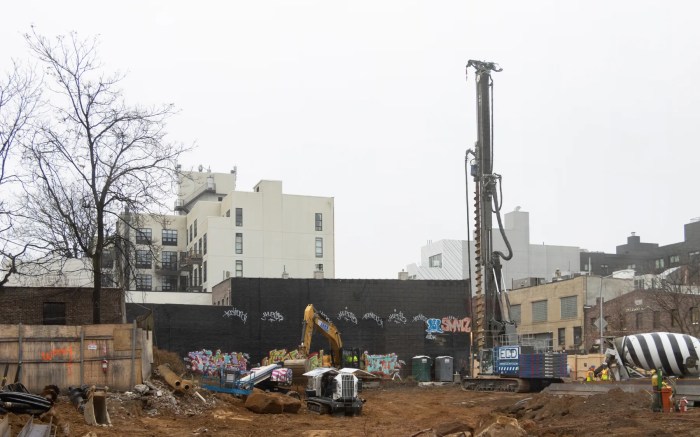Right now, you can walk the entire third floor of the Museum of the City of New York and see iconic pieces of movie and television history.
The exhibit “This is New York: 100 Years of the City in Art & Pop Culture,” formed in celebration of the museum’s centennial, focuses on the significant impact NYC has had on artists of all mediums. A lamppost from the set of the children’s television program “Sesame Street”, the pink tank top and white tulle skirt dress worn by Sarah Jessica Parker in the opening credits of “Sex and the City” and the gold and diamond encrusted “Furby” necklace from the movie, “Uncut Gems” (2019) are just some of the iconic pieces on view.
But the true gem of this exhibit is the original movie, “You Are Here.”
In a dark makeshift theater, 16 screens are placed side by side across the middle of three walls with about a dozen cushioned, backless chairs in the middle of the room. For a moment, there is a focus on food with images of hot dogs, pizza and shaved ice flashing across the walls while Parker Posey is heard asking for a falafel from a street cart in the movie “Party Girl” (1995).
“I can’t afford Tribeca,” says Greta Gerwig as Frances in “Frances Ha” (2012) as apartments dominate the visuals. Sometimes a single image appears on all screens at once and sometimes images traverse screens, like a train bustling across the room.
Achieved by splicing together hundreds of scenes from more than 400 movies shot on location in NYC from 1923 to 2023, “You Are Here” is a 21-minute cinematic masterpiece.


“I think that was part of the magic of it,” said Natalia Espinoza, museum-goer and Ecuadorian filmmaker who recently graduated from Columbia University with her master’s in film studies. “Having all these screens playing different things at the same time, but that were nonetheless connected.”
Not only is there the recognition of the movies themselves, but of the streets, restaurants and buildings in them. The immersive movie-going experience mimics walking the streets of NYC where things happen at the same time and sounds come from every direction. The script is a compilation of sound bites emanating from different screens, but following a narrative arc illustrated by hundreds of images synonymous with the concrete jungle.
“Whatever themes we were choosing, the production team did an extraordinary job at honing in on those little iconic moments that was so quintessential to each story,” said Jon Kamen, native New Yorker and CEO of Radical Media, the company behind the short film.


This visual ode to the Big Apple is reminiscent of E.B. White’s 1949 essay, “Here is New York.” It too celebrated the spectrum of New York City-living and its undeniable charm:
“New York is the concentrate of art and commerce and sport and religion and entertainment and finance, bringing to a single compact arena the gladiator, the evangelist, the producer, the actor, the trader and the merchant. It carries on its lapel, the unexpungeable (sic) odor of the long past, so that no matter where you sit in New York, you feel the vibrations of great times and tall deeds, of queer people and events and undertakings.”


Whether it’s learning how to navigate the subway system like Chip (Frank Sinatra) in “On the Town” (1949), complaining about bug problems and rent prices like the titular Annie (Diane Keaton) in “Annie Hall” (1977) or being witness to something as wild as someone loudly faking an orgasm in the middle of a crowded deli like Sally (Meg Ryan) in “When Harry Met Sally” (1989) — NYC proves to be both, nostalgic and timeless.
“There is the emotional journey that the film takes you on and the real appreciation of New York City, warts and all,” said Sarah Henry, Robert A. and Elizabeth Rohn Jeffe Chief Curator of the Museum of the City of New York. “This is a love letter, but it’s also a poison pen letter. It’s all; it’s the good, bad, and ugly.”
Walking out of the intimate theater, one swells with a sense of pride about where they are. Native New Yorker or not, there is a je ne sais quoi about being in the city that never sleeps, the greatest city in the world — the home of King Kong, the land of museums, of celebrity sightings, of buskers, of the “slice” and so much more.
“This is New York: 100 Years of the City in Art & Pop Culture” and “You Are Here” run through July 21.
Read more: Jumaane Williams Backs Faculty Protest at New School



